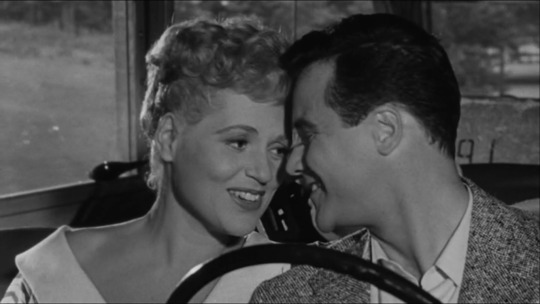Ill Help You Be Popular: It Should Happen to You and the Thirst for Fame by Daniel Carlson
By Yasmina Tawil
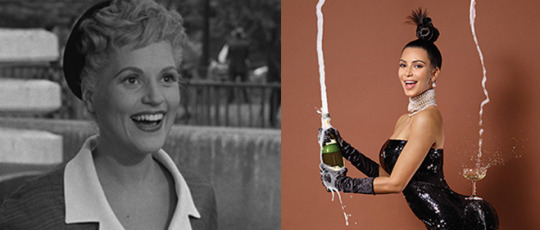
“Within the last century, and especially since about 1900, we seem to have discovered the processes by which fame is manufactured. Now, at least in the United States, a man’s name can become a household word overnight. The Graphic Revolution suddenly gave us, among other things, the means of fabricating well-knownness. Discovering that we (the television watchers, the movie goers, radio listeners, and newspaper and magazine readers) and our servants (the television, movie, and radio producers, newspaper and magazine editors, and ad writers) can so quickly and so effectively give a man “fame,” we have willingly been misled into believing that fame — well-knownness — is still a hallmark of greatness. Our power to fill our minds with more and more “big names” has increased our demand for Big Names and our willingness to confuse the Big Name with the Big Man. Again mistaking our powers for our necessities, we have filled our world with artificial fame.
“Of course we do not like to believe that our admiration is focused on a largely synthetic product. Having manufactured our celebrities, having willy-nilly made them our cynosures — the guiding stars of our interest — we are tempted to believe that they are not synthetic at all, that they are somehow still God-made heroes who now abound with a marvelous modern prodigality.”
— Daniel J. Boorstin, The Image: A Guide to Pseudo-Events in America (1961)
“Kim has mastered the art of taking flattering and highly personal photos of oneself.”
— promotional copy for Kim Kardashian West’s Selfish (2015)
///
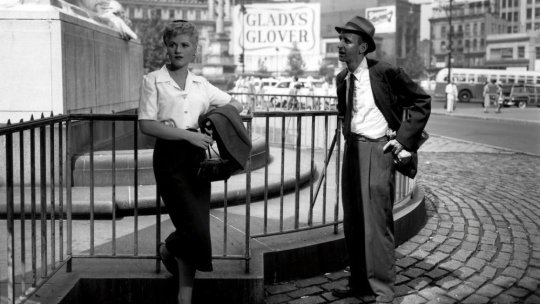
1954, and a time of creation. Marilyn Monroe marries Joe DiMaggio. Bill Haley releases “Rock Around the Clock.” Sports Illustrated puts out its first issue, and the Miss America pageant is broadcast on TV for the first time. The first nuclear submarine is commissioned, and the first nuclear power station comes online. The territorial excess of the post-war boom is funneled into home appliances, sedans the size of small boats, and the Red Scare. It’s when the country starts taking stock of itself and figuring out what kind of century it’s going to have, now that they’ve toppled the Axis and emerged under sunny skies. It’s also a tipping point for the way Americans are able to see themselves in the mirror of visual media: in 1946, only 0.02% of American households had a television set, but by 1954, that figure has exploded to 59.4%. More than half of all U.S. homes now had a glowing box in the corner of the living room that let them gaze for hours at the faces of actors, actresses, comedians, composers, authors, emcees, and anyone else who managed to, however temporarily, step over the firmament that separates viewer from viewed, consumer from provider. It’s a box that gives you the ability to gawk at famous people — that actively encourages you to do this — and to daydream about what their lives must be like. Crucially, though, it’s a device that doesn’t just reflect fame, but create it. Get yourself on TV, and you can be a household name, instead of the other way around. In other words, it was the beginning of the era of the self-reflexively famous, and nobody quite knew how to handle it.
That sense of unease, of nervous laughter, is shot through 1954’s It Should Happen to You, directed by George Cukor from a script by Garson Kanin. It is, ostensibly, a comedy, but this is a little like saying Romeo and Juliet is about a couple of young kids in love. It’s got plenty of laughs, sure. Judy Holliday stars as a woman with aspirations of fame, and she finds herself in a triangle between a scheming executive (Peter Lawford) and an earnest documentarian (Jack Lemmon, in his first major role). Holliday plays her part with sparkle, and Lemmon is so pleasing you’d never suspect it was his big-time debut. Part of the misconception can be chalked up to the marketing, too: key art and trailers for the film paint it as a kind of laugh riot or hilarious screwball trip, set against the city that never sleeps. But it’s a film plagued by worry and colored by darker things, and the comedy is shaped by the story’s grim satire of a new generation that seemed to seek fame above all else. What seemed outlandish sixty years ago, though, is now commonplace, and as a result, to modern eyes the film often plays almost flat, and beats that would’ve been surprising to post-war viewers feel instead inevitable. It’s a film worth watching for many reasons, but its prescience tops the list.
Gladys Glover (Holliday) seems to come out of nowhere. We meet her wandering in Central Park, and her backstory is only sketched out via an exposition dump when she strikes up a conversation with Pete Sheppard (Lemmon), who’s shooting B-roll for a documentary about city life: she’s been in the city a couple of years, modeling girdles until she was fired for being a fraction of an inch oversize, and now she’s unemployed and struggling to find meaning in her life. She lets Pete film her for a bit, but importantly, she’s more infatuated by the idea of seeing herself in an eventual film than she is in anything he has to say. She’s less a person than a force of will; a physical representation of the thirst for notoriety. She’s not malicious, though. Kanin doesn’t paint her as a murderer or sociopath. She just wants renown, and she trusts that her desire necessitates worth.
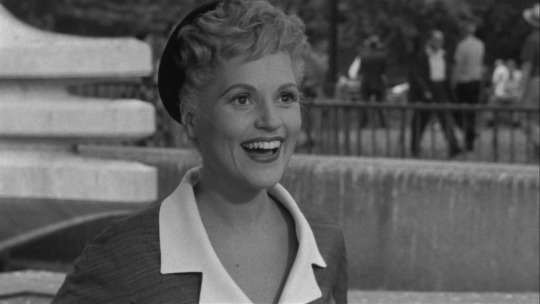
She achieves her dream in the simplest way possible, taking the $1,000 she’s socked away and renting a few months of space on a giant billboard in Columbus Circle. Her design for the billboard is just her name in block letters: “GLADYS GLOVER,” several stories high. She’s not selling a product or an experience. She is the product, the experience. In the film, this is played somewhat for laughs, as a goofy but natural (if dark) extension of Gladys’s quest for notoriety. Yet sixty years on, the most surprising thing is how unsurprising it is. What else are we doing with our time if not some version of this? The social networks we fill with observations and links when we should be working; the photo-sharing apps that let us curate versions of our lives; the way we narrativize our experience through self-selected media, with each of us the hero of our own movie. The democratization of digital publishing lets everyone get their own version of a billboard on Columbus Circle, if they so choose, with their friends the pedestrians who endlessly file by.
It Should Happen to You doesn’t have computers, but when it comes to social constructs — the way Gladys’s desire for popularity is clear, direct, irreducible and inseparable from her being — it might as well have been made yesterday.
Gladys’s billboard is what brings her into view of Evan Adams III (Lawford), whose Adams Soap Co. traditionally leases the space. Adams tries to buy Gladys out of it, but she doesn’t want money. She does, though, accept a trade: six more signs in exchange for the one Adams wants, all bearing nothing but her name. Soon enough, she’s known across the city. When she signs a receipt at Macy’s, clerks and shoppers anxiously gathering around, shocked that “the” Gladys Glover is in their store. Yet Gladys’s single-minded pursuit blinds her to what’s happening around her. Adams wants to pursue every kind of exploitative relationship with her that he can — he wants to sleep with her and also use her as a model for his products — while Pete, still smitten with Gladys after their meeting, winds up moving into her building and developing a fragile friendship with her. He likes her, but he’s puzzled by her: “What is this craze to be so well-known?” he asks her. But she’s unable to answer, because to her the question doesn’t make any sense. It’d be like asking someone why they were so fond of breathing. Gladys’s desire to be well-known is simply this thing inside that defines her personality and shapes her actions. Pete’s frustration is one born of concern because Gladys is breaking from the pack: he preaches the value of conformity and the pleasure of being part of the great faceless mass of humanity, while she wants to rise above it.
Everything in the film expertly drives home this worrisome prediction of life as a thing to be produced rather than experienced. When Adams takes Gladys out on the town, she’s thrilled to catch a glimpse of Walter Winchell at a dinner club, exclaiming that he’s “the seventh big name I’ve seen tonight!” Not person; name. When a local TV reporter does a snarky op-ed about Gladys’s billboards, she’s not upset at being mocked, but thrilled that she’s crossed over into a new medium. (It is not an accident that her first billboard is next to the building for NBC Television Theatre.) The reporter speculates that her identity, whoever she might be, is “one of the most unimportant questions of the day,” but the film’s world is one in which all press is good press, so the story makes Gladys even more popular. Adams turns her into a spokesmodel because she’s what he considers the iconic ideal of the average American girl: attractive, eager, and infatuated with her own existence. Increased earnings and sheer drive become the sole impetus and justification for her fame. She’s suddenly everywhere, her name on everyone’s lips, for no reason that anyone can remember. Cukor reinforces this through canny visuals, letting corners and glimpses of Gladys’s billboards loom in the background. The only gap between the film’s perception of causeless fame and our present understanding of it is one of tone: while Gladys is made an object of sport for members of the media and other citizens who laugh at her simple antics, today we take such things in stride. Who wouldn’t want to be famous on some level? With these abilities at our fingers, why would we not use them? Gladys is mocked by the film because she’s an outlier, whereas today she’d be part of the very crowd she’s trying to rise above.
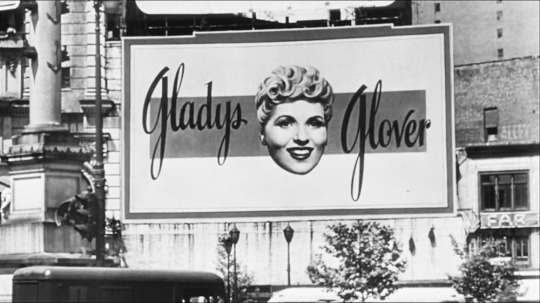
Kanin and Cukor stop just short of twisting the knife completely and letting their victim bleed out. In its final reel, the film becomes one of redemption, or rather, retreat: Gladys realizes that Adams is out to scam her, and that Pete truly loves her. More than that, she comes to the conclusion that she’s acted rashly, and so she trades away her fame for a shot at love. The ending feels too soft, even for its time, and especially looking back on it now. It’s not that Gladys could never have changed her ways, but rather, that the film up until the end doesn’t seem to believe she ever will. Gladys’s reversal makes for a pleasant turn of events — Lemmon is almost effortlessly charming, and you’re rooting for him the whole time — but it also feels a little out of joint with everything that’s come before. This is the great fear the film confronts and does not know how to defeat: that one day a generation will rise up and demand recognition for nothing more than being alive. That they will confuse celebrity with achievement. The majority of the film works so well artistically because Kanin and Cukor seem to be playing to the strength of these convictions. Beyond that, it winds up working historically because of the way Gladys’s simple rise to infamy presages the individual worlds we’re now able to create for ourselves online, worlds that the creators of the film could not have imagined existing.
The first time you watch it, It Should Happen to You feels almost surprisingly sad about what’s to come, but maybe it’s just surprising because of our vantage point. We always seem to expect art from the past to be somehow less aware or educated about the depths of the human experience as we understand it, as every present point on the timeline is the most advanced simply by virtue of its culture, technology, and history. We say a movie “holds up well” when we can still find insight in it years later, as if older movies shouldn’t be able to sneak up on us in our modern enlightenment. We allow for nuance and intellect but never seem to realize the ways older films have the potential to illuminate our present as much as they did for the people who saw them when the prints were first struck. That kind of unintentional myopia is, in its way, the kind of thing It Should Happen to You was worried would happen. It’s a film about the dangers of self-importance, and about what might happen when people on a large scale start to mistake popularity for value. If it feels too on the nose at times, it’s only because so much of what used to be fiction is now fact. Even Pete isn’t immune to the changing culture. As a documentarian, he’s constantly roving through crowds with his handheld camera, looking for ways to chronicle the human experience and capture the essence of the masses. The closest he comes is when he steps into a chimpanzee enclosure at the zoo and films the crowd through the bars. They chuck peanuts at him, and we get a POV shot through his camera and out at their eager faces. It was the perfect image for a newly televised era, and one that still lands like a blow: we’re watching ourselves watch ourselves, in an infinite recursion. Eventually, we all get to be on screen.
